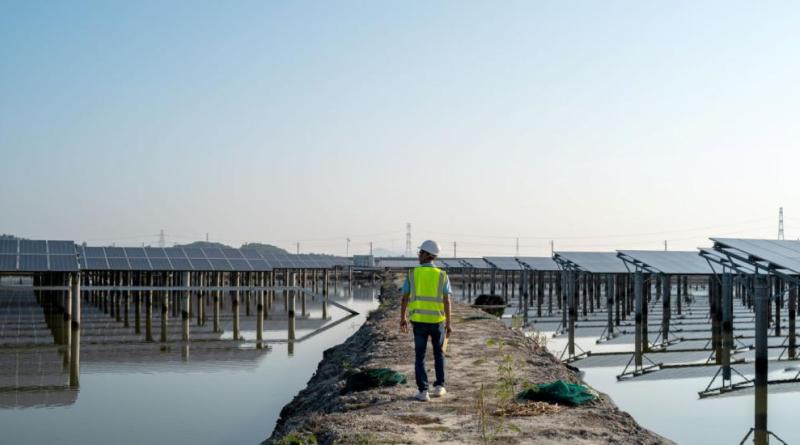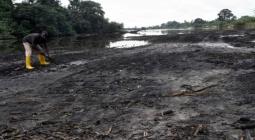After a Decade of Fossil Fuel Investing, Can China Fulfill Its Promise of a "Green" Belt and Road Initiative?

A decade ago, China launched the Belt and Road Initiative (BRI), an ambitious effort to finance infrastructure around the world. Since then, Chinese investments made through the BRI have become an integral part of the global infrastructure landscape — particularly in developing countries — with estimates of $1 trillion or more invested across 152 countries.
Unfortunately, the first 10 years of the BRI were dominated by fossil fuel investment, with $52 billion invested in coal power alone according to the China Overseas Finance Inventory.
But the next decade could look very different: At the 2021 UN General Assembly, China announced it would cease building new coal plants abroad and instead step up investment in renewable energy, a commitment reiterated by President Xi Jinping at the latest BRI summit in October 2023.
For a world that still needs as much renewable investment as it can get, this is welcome news. But while China’s policy shift is a step in the right direction, achieving a green BRI in the near term may be easier said than done. Factors like changing host country demand, uncertain economic conditions at home and, in many cases, financial headwinds abroad will all determine whether China can truly deliver a green BRI.
Where Did Chinese Overseas Investments Go in the First Decade of the BRI?
From 2013-2022, fossil fuel infrastructure — including coal, gas and oil-fired power plants — represented more than two-thirds of Chinese power sector investments in BRI countries (defined as those that signed BRI memoranda of understanding with China).
The majority of these investments were spearheaded by the China Development Bank, the Export-Import Bank of China, and state-owned commercial banks and enterprises, which have historically favored fossil fuel investments for their larger project sizes and lower risk relative to renewable energy projects. Where BRI investment in renewables did occur, it was largely driven by profit-oriented, privately owned Chinese enterprises which were open to smaller-scale projects and could leverage a comparative advantage in renewables.
September 2021 marked a critical turning point when China committed to halt overseas financing for coal-fired power plants and promote greener finance. But while investment in new overseas coal power ended immediately — dropping to zero in 2022 — Chinese investment in wind and solar has not gone up correspondingly.
Part of the reason for this lag could be that China’s pronouncement lacked specific targets and incentives for renewable energy investment. While it was followed by some guidance (from the National Development and Reform Commission and the Ministry of Ecology and Environment, for example), this may not have been strong enough to have more than a limited impact on renewable energy investment trends. Investors may have also been hampered by China’s stringent COVID-19 pandemic control measures, which limited cross-border investments until the end of 2022.
What Will Shape China’s Transition to a Green BRI?
China’s signal that it plans to increase green investment through the BRI could be a game-changer for the pace of renewables uptake worldwide. But shifting the inertia of such a massive investment program won’t be easy. In addition to strengthening its own commitment with clear guidance and supportive policy measures, China’s ability to meet this goal will hinge on global economic conditions and the investing environment within BRI host countries and China itself.
Three key factors could shape the delivery of a green BRI in the near term:
1) Host country demand and investment returns will largely determine where finance goes.
There is no doubt that BRI host countries, whether low, middle or high income, need renewable energy investment. Most are developing countries, which are expected to need a six- or seven-fold increase in annual clean energy investment to meet global climate targets — or from $260 billion in 2022 to $1.4-$1.9 trillion by the early 2030s.
But no matter how much these countries need renewable energy, they must be able to actually attract investment — which generally flows where demand and returns are highest.
Over the last 10 years, China’s overseas investments in solar and wind power were overwhelmingly concentrated in four Middle East countries: United Arab Emirates, Turkey, Saudi Arabia and Oman. These were among the few countries with rising renewable energy investment activities outside of advanced economies and China.
To help spur demand for clean energy infrastructure, these governments adopted aggressive renewable energy targets and supporting policies, such as using long-term power purchase agreements through government-owned off-takers to reduce investor risk and uncertainty. In UAE for example, the government provides land for renewable projects, helping to decrease both costs and risk for investors. These types of policies, along with a competitive bidding process, have helped drive down the cost of solar-generated electricity to record lows and accelerate the development of renewable capacity.
However, these four nations are among the richer BRI host countries. While their strategies to attract finance for clean energy have been successful and can light the way forward for some, not all BRI countries will have sufficient resources and capacity to follow in their footsteps.
2) Economic constraints can make it hard for developing countries to attract investment.
For poorer developing countries, which are typically viewed as higher risk by investors, it can be far more difficult to attract finance for climate solutions. While there are steps these countries can take — such as using fiscal policies to “de-risk” green projects and improve their risk-adjusted returns — these techniques require public capital, which is exactly what many developing nations lack right now.
Many low-income countries are currently facing strong economic headwinds, including reductions in revenue, unsettled markets, inflation and rising interest rates; conditions worsened by the COVID-19 pandemic and Ukraine conflict. At the same time, low- and middle-income countries often carry heavy debt burdens which are compounded by higher interest rates. All this leaves countries with fewer resources — less “fiscal space” — for other priorities like climate spending and erodes support for policies that can facilitate climate investing.
For example, an electric transmission grid — typically financed by public spending in developing countries — is critical to attract investments in renewables. However, grid investments in the 2019-2022 period declined by a third compared to 2015-2018 in developing countries (excluding China). This low level of spending on grids not only leaves countries unprepared to accommodate renewables investment, but also hinders efforts to enhance electricity supply and access.
Fortunately, there are signs that these headwinds could ease up in the next few years. Inflation in emerging market and developing economies is expected to fall from 9.8% in 2022 to 8.3% in 2023 and 6.8% in 2024, leaving more space for fiscal spending on clean energy (such as through green subsidies and tax incentives) to help attract investment from China and elsewhere. Lower inflation would also improve risk-adjusted returns for developing country renewables, further attracting investment.
The urgent need to address national debt to facilitate climate action has also risen on the global agenda this year. While coordinating political will can be difficult, a variety of promising solutions have been proposed and will be discussed through the G20, International Monetary Fund (IMF) and other venues.
3) Conditions in China will affect BRI investors’ appetites.
On the supply side of the equation, economic conditions in China will bear on how much capital BRI investors have to work with and what they’ll prioritize within their investment activities.
The first decade of China’s BRI came at a time of high growth and high savings at home. Awash in capital, Chinese investors searched the globe for returns. But a decade down the road, things look very different: While the country’s economy bounced back in early 2023 with the removal of COVID restrictions, it has since slowed, and the IMF projects that China’s growth will drop from 5.2% in 2023 to 4.4% in 2024. This economic slowdown could result in fewer overseas energy investments in the near term, including in clean energy.
Slower growth will also highly constrain China’s fiscal capacity and make it less likely to offer incentives to encourage overseas investments, including clean energy and other infrastructure investments, in the near term. External lending provided by the China Development Bank and the Export-Import Bank of China could be the most affected, given their development- and policy-oriented lending practices.
Finally, the depreciation of Chinese yuan as the result of loosening monetary policy in China makes overseas investment less appealing to Chinese investors, as most cross-border investments are made in USD.
What Can China and Host Countries Do to Help Make a Green BRI a Reality?
A climate-driven BRI may be the “biggest green opportunity” of the coming decade, helping fill the substantial investment gap needed to accelerate the clean energy transition on a global scale. With developing countries clamoring for collaborative climate and development partners, this shift can show that China is listening to their concerns and climate plans. It is also a chance for China to build on its significant comparative advantage in renewable energy.
However, a green BRI is not a foregone conclusion. Navigating near-term challenges will require concerted efforts from China, host countries and the border international community to mitigate risks, bolster infrastructure, and create a conducive environment for the clean energy transition.
To better match demand with supply, developing countries that have signed BRI memoranda of understanding should work closely with China to identify priorities and opportunities for energy access and a clean energy transition. By updating their national climate commitments (NDCs) and creating country climate strategies, they can map out where investment needs are greatest, making it easier to connect commitments with resources. These strategies should be shared between ministries and especially with ministries of economy, finance or commerce — to be sure that they are working toward an enabling environment for clean energy investment — as well as communicated to foreign investors.
The 2021 8th Ministerial Conference of the Forum on China-Africa Cooperation provides an example of deepening collaboration between China and African countries. Through the Dakar Action Plan (2022-2024) adopted by the Forum, China will provide capacity-building and technical assistance in the energy sector and strengthen cooperation in the solar photovoltaic industry.
China can also consider extending domestic financial incentives for green investing to projects in BRI countries, potentially in the form of regulations or foreign aid. For example, People’s Bank of China, the country’s central bank, rolled out a new monetary policy tool to support reductions of carbon emissions. Domestically, the central bank provides low-interest-rate loans to Chinese commercial lenders, making it cheaper to finance projects that reduce CO2 emissions; extending similar incentives for Chinese projects overseas can help fulfill the country’s green BRI commitments. Regulatory support could include extending a traffic light system to more Chinese financial actors. This system groups activities by their environmental impact, helping decision-makers to “green-light” clean renewable energy projects while giving the “red light” to stop fossil fuels.
Fossil fuel investment dominated the first decade of the BRI. But with a full-scale shift to greener finance in its second decade, China holds the power to reshape the future of clean energy — especially in countries where it’s needed most.





